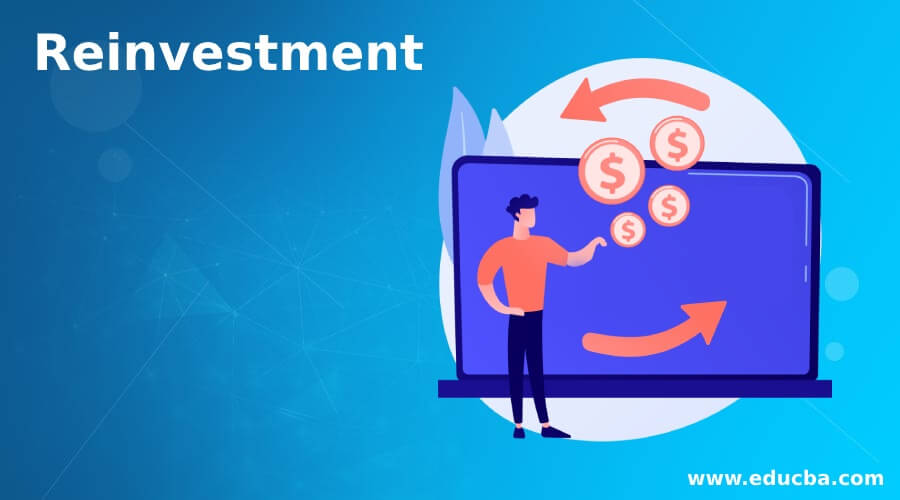Updated July 7, 2023
What is Reinvestment Risk?
The term “reinvestment risk” refers to the risk wherein an investor might be unable to reinvest the cash flows from current investments(such as coupons received from bond investments) at a rate equal to the current return.
Although it is primarily associated with bond investments, any investment that generates cash flow remains exposed to reinvestment risk.
Explanation of Reinvestment Risk
When the overall market interest rates decrease, the value of fixed-rate bonds with higher coupons surges, enticing some bondholders to sell the bonds for a profit. But, on the other hand, the other investors hold onto their bond investments as they might not be able to earn as much interest income by reinvesting the proceeds from the investment sale, which is precisely due to reinvestment risks –lower market interest rates resulting in a lower yield to maturity.
How Does Reinvestment Risk Work?
It primarily functions in the following two ways:
- Reinvestment Risk in Callable Bonds: The holders of callable bonds are constantly exposed to the risk of premature buyback of the bonds by the issuers, which becomes more pronounced in a falling interest rate environment. In this case, the reinvestment risks arise when the interest rates fall and the issuers refinance their bond obligations leaving the investors with no other options but to reinvest the proceeds at a lower rate.
- Reinvestment Risk in Coupon Paying Bonds: The holders of coupon bonds receive regular coupon payments, which becomes the source of reinvestment risk in this case. In case of falling interest rates, the investors cannot reinvest the coupons at a rate equal to the bond investments.
- Reinvestment Risk in Zero-Coupon Bonds: Even though zero-coupon bonds remain free from reinvestment risks until the maturity of the bonds, they become exposed to this risk when the bond investments mature, and the proceeds need to be reinvested.
Example of Reinvestment Risk
Different examples are mentioned below:
Example #1
Let us take the example of David, who purchased ten 10-year $1,000 bonds offering 5%as an annual coupon. However, the market interest rates are expected to decline during the next ten years to 3%. Explain the reinvestment risk in this case.
Here, David will receive a yearly coupon payment of $500 (= 10 * $1,000 * 5%) for the next 10 years and the principal payment of $10,000 (= 10 * $1,000) at maturity. The first instance of reinvestment risk will be when David reinvests the coupon payments at a lower rate of 3% compared to the bond coupon rate of 5%. On the other hand, if the low interest continues till the maturity of the bonds, David will find it difficult to reinvest the proceeds from the maturity.
Example #2
Take the example of 5-year callable bonds issued by XYZ Inc. and purchased by John. The bonds offered an annual coupon rate of 6%. However, the market interest rates declined to 4% two years after the bond issuance. Consequently, XYZ Inc. decided to grab the opportunity to refinance its debt at a lower rate (by exercising the call-back right). Discuss John’s reinvestment risk in this case.
Here, John will have to reinvest the proceeds from the called-back bonds at 4% instead of the 6% coupon rate earned on the bond investment. This is the reinvestment risk for John in this case.
How to Avoid Reinvestment Risk?
The following ways can be used to mitigate it:
- Investment in non-callable bonds or securities helps avoid reinvestment risk as this technique prevents issuers from calling back high coupon-paying bonds when market interest rates go down.
- Investment in zero-coupon bonds also helps investors avoid reinvestment risks to a large extent, as these bonds don’t result in any intermediate cash outflow in the form of coupons.
- Investors can construct a bond ladder, a bond portfolio with varying maturity dates. Bonds maturing in a high-interest rate environment offset losses (notional) incurred due to maturity in a low-interest rate market, thereby addressing and mitigating the reinvestment risks. This has implications for the overall investment strategy.
If the market interest rates fall during the holding period of a bond, then the value of the fixed coupon payment increases. Still, the coupon payment’s reinvestment value decreases due to the lower market rates. Also, reinvestment risks are higher for bonds with shorter maturities or higher coupon payments and lower for bonds with longer maturities or lower coupon rates.
Advantages
Some of the significant advantages are as follows:
- The value of the fixed coupon payment received from the bonds increases for investors.
- It is beneficial for borrowers to either raise more debt or refinance existing debt at favorable rates.
Disadvantages
Some of the major disadvantages are as follows:
- It results in a lower realized yield than the expected return rate.
- It is almost impossible to eliminate the reinvestment risks for any investment.
- Investors who prefer short-term bond investments primarily face exposure to reinvestment risk.
Conclusion
So, it can conclude that although reinvestment risk can be reduced to some extent by constructing a well-researched bone portfolio, it is impossible to eliminate it. Hence, any significant decline in the market interest rates will likely impact bond investments, but the extent may vary across portfolios.
Recommended Articles
This is a guide to Reinvestment Risk. Here we also discuss the introduction and how it works, along with its advantages and disadvantages. You may also have a look at the following articles to learn more –




